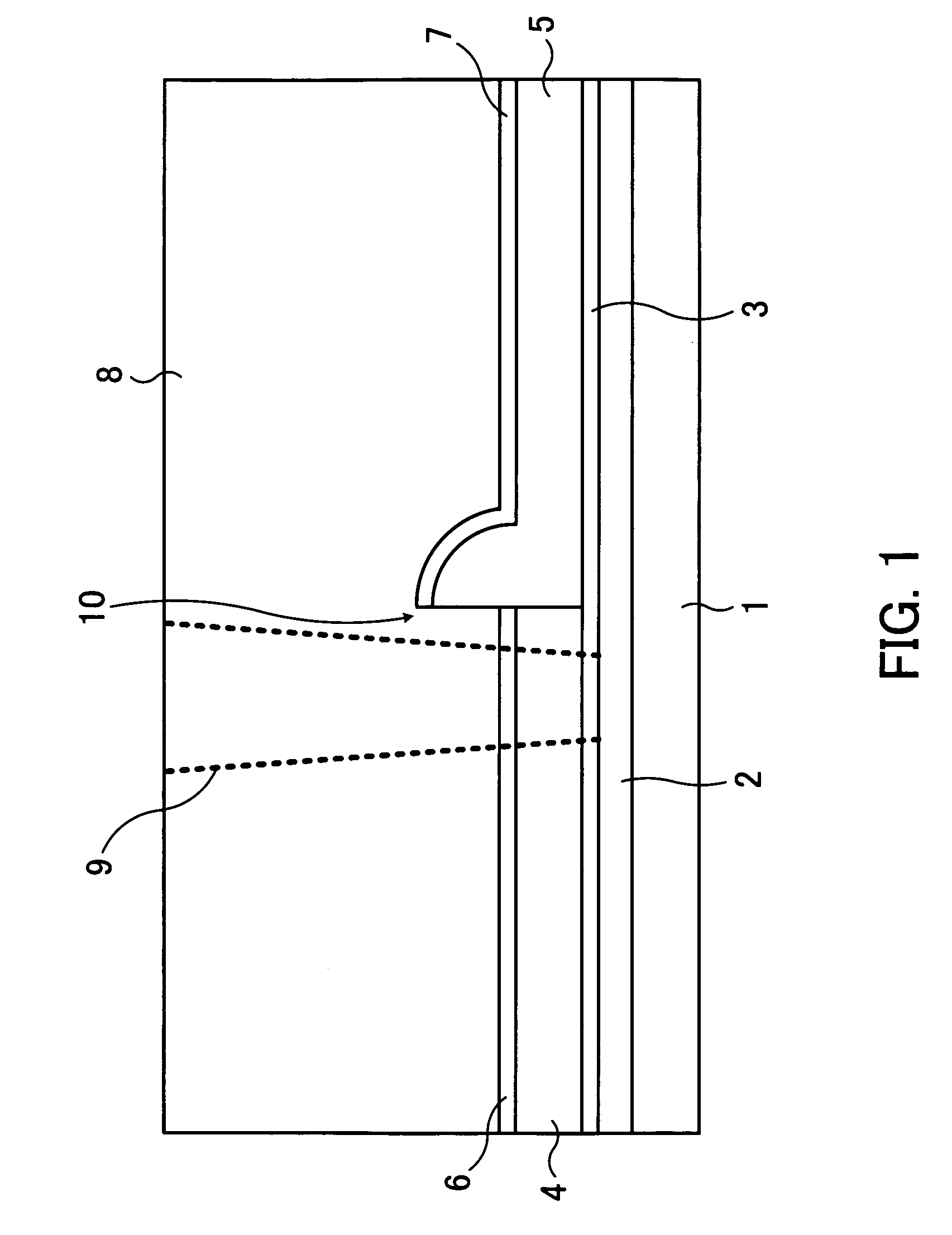Semiconductor device and process for producing the same
a technology of semiconductor devices and semiconductors, applied in semiconductor devices, semiconductor/solid-state device details, electrical apparatus, etc., can solve the problems of increasing resistance, insufficient contact hole opening formed by above etching, and increasing resistance, so as to effectively suppress the increase in resistance and occurrence
- Summary
- Abstract
- Description
- Claims
- Application Information
AI Technical Summary
Benefits of technology
Problems solved by technology
Method used
Image
Examples
first embodiment
[0075]The semiconductor device according to the first embodiment of the present invention is explained below by taking a basic structure as an example. FIG. 1 is a schematic cross-sectional view of the basic structure of the semiconductor device according to the first embodiment. As illustrated in FIG. 1, the basic structure contains a contact structure in which a conductive region (made of a conductive material) is formed over different types of substructures (not shown), different films are dividedly formed in an upper layer located over the different types of substructures, and a contact electrode extending to the conductive region is formed.
[0076]For example, in the case of the CMOS inverter circuit in which an nMOS transistor and a pMOS transistor shares a gate electrode, and stressing films having different properties are dividedly formed over the nMOS transistor and the PMOS transistor in order to improve the device performance, a contact hole electrically connected to the ga...
second embodiment
[0106]The semiconductor device according to the second embodiment of the present invention is explained below. FIG. 6 is a schematic cross-sectional view of the basic structure of a semiconductor device according to the second embodiment.
[0107]The semiconductor device according to the second embodiment illustrated in FIG. 6 is different from the first embodiment illustrated in FIG. 1 in that the contact-hole formation region 9 is arranged on the second-stressing-film side, where the second stressing film 5 is formed after the first stressing film 4 is formed. That is, the contact-hole formation region 9 and the division region 10 are arranged so that the contact-hole formation region 9 includes only the second stressing film 5 as a stressing film in the vicinity of the bottom of the contact-hole formation region 9 as indicated by the dashed lines in FIG. 6. For example, the contact-hole formation region 9 is arranged on the second-stressing-film side so as to avoid the thick portion...
third embodiment
[0119]According to the first and second embodiments, the first, second, and third etching stopper films 3, 6, and 7 are used for dividedly forming the first and second stressing films 4 and 5, for example, as illustrated in FIGS. 1 and 6. According to the third embodiment of the present invention, the formation of at least a portion of the first, second, and third etching stopper films 3, 6, and 7 is dispensed with, as explained below.
[0120]FIGS. 11 to 13 are schematic cross-sectional views of the basic structures of the semiconductor devices according to the third embodiment. In the structures illustrated in FIGS. 11 to 13, the third etching stopper film 7 is not formed. Even in such structures, it is possible to arrange the contact-hole formation region 9 on the first-stressing-film side as illustrated in FIG. 11, or on the second-stressing-film side as illustrated in FIGS. 12 and 13. If the increase in the thickness of the second stressing film 5 in the boundary region is an amou...
PUM
 Login to View More
Login to View More Abstract
Description
Claims
Application Information
 Login to View More
Login to View More - R&D
- Intellectual Property
- Life Sciences
- Materials
- Tech Scout
- Unparalleled Data Quality
- Higher Quality Content
- 60% Fewer Hallucinations
Browse by: Latest US Patents, China's latest patents, Technical Efficacy Thesaurus, Application Domain, Technology Topic, Popular Technical Reports.
© 2025 PatSnap. All rights reserved.Legal|Privacy policy|Modern Slavery Act Transparency Statement|Sitemap|About US| Contact US: help@patsnap.com



